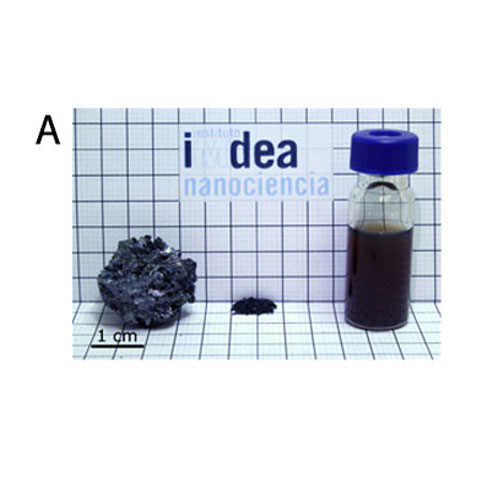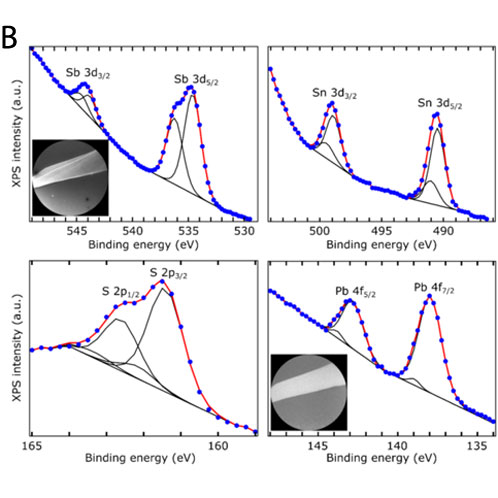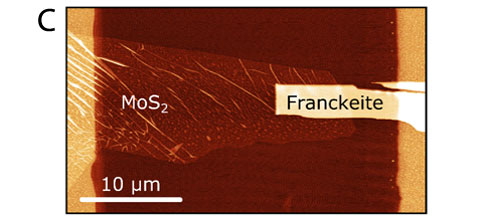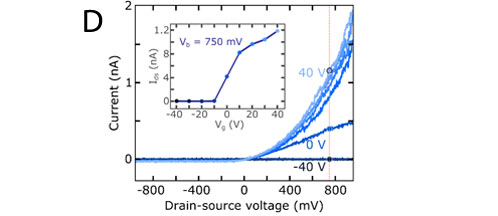The design of new generation electronic materials is a great challenge since their size is being reduced progressively. Electrons in nanometer-thick semiconductor films behave differently from those in thicker samples because their motion is constrained to two dimensions. This is why the scientific community has turned its attention to producing more stable materials to be manufactured at a large scale.
Up to now, the process to build these structures was completely handcrafted and presented several problems such as the difficulty to align the crystal lattices of the different materials with atomic accuracy or to avoid trapping ambient adsorbates between the layers, hampering their performance and reproducibility.
Now, researchers from IMDEA Nanoscience (Madrid, Spain), Universidad Autónoma de Madrid (Spain), ALBA Synchrotron and Delft University of Technology have found out that franckeite (Pb5Sn3Sb2S14), a mineral belonging to the sulfosalts family, shows a natural crystal structure similar to other synthetic two-dimensional structures.
Results that have been recently published in Nature Communications show great advantages of this mineral: an almost perfect alignment between crystal lattices and the absence of tapped residues between layers.
Its potential application could be related with the development of photodetectors or solar cells available to work at the infrared. These devices are highly interesting for producing night-vision systems (like video cameras) or telecommunications sensors.
Life after graphene
In 2004 André Geim and Konstantin Novoselov proved that it was possible to separate atomically-thin layers of graphene by just using an adhesive tape. Since then, the scientific community has made great efforts to obtain graphene with semiconducting properties or to develop new ultrathin or two-dimensional materials.
Using a similar process than graphene, researchers managed to isolate and exfoliate ultrathin flakes of only few atomic layers of franckeite. Besides, it was also possible to chemically exfoliate this mineral in order to obtain suspensions in dispersion, enabling its manufacture at a large scale.
Using the photoemission electronic microscopy of the CIRCE beamline, at the ALBA Synchrotron, they could analyse the chemical composition of the different layers and check their homogeneity, demonstrating its high quality.




A) Franckeite samples. Left: bulk mineral; middle: powder material obtained after grinding of raw chips; right: suspension of exfoliated material prepared by sonication of a 100 mg/ml powder dispersion. B) Photoemission spectra showing the different chemical species in micrometers samples of franckeite. C) AFM topographic image of the device. D) Diode-like current-voltage curve in dark conditions for different applied back-gate voltages.




